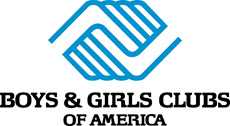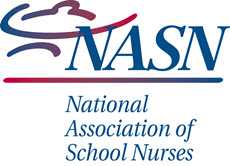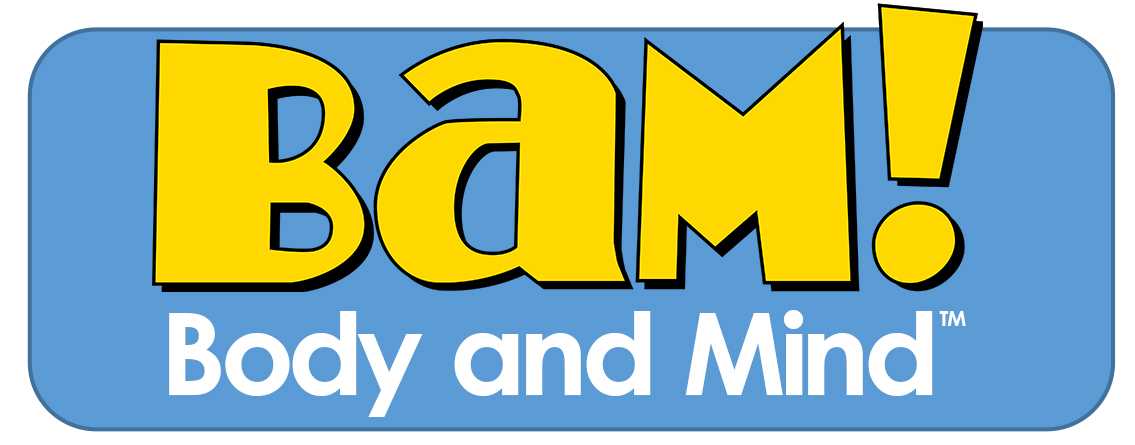Funded Non-Governmental Organizations for Healthy Schools
Through the National Collaboration to Promote Health, Wellness, and Academic Success of School-Age Children, CDC Healthy Schools funds five national non-government organizations (NGOs) to complement and strengthen the work of State Public Health Actions grantees. These NGOs support the 1305 grantees and their organization’s constituents to promote and implement proven policies, practices, and programs in at least one of the following school health priority areas:
Priority Area 1 – Physical Education and Physical Activity in Schools
Priority Area 2 – School Nutrition Environment and Services
Priority Area 3 – Out of School Time Healthy Eating and Physical Activity
Priority Area 4 – School Health Services for Managing Chronic Conditions
The NGOs that support the following priority areas are:
- Alliance for a Healthier Generation
- Boys and Girls Club of America
- National Association of School Nurses
- National Network of Public Health Institutes
- SHAPE America
CDC Healthy Schools also funds the National Association of Chronic Disease Directors (NACDD) to provide technical assistance and professional development activities that will build the capacity of state health departments. This will equip school health and education leaders with greater knowledge, skills, and abilities to implement proven strategies that create healthier environments for students. Initiatives such as these are essential to help leaders from across the country access practical tools and resources to promote the health of their student population.
Priority 1 – Physical Education/Physical Activity
The National Network of Public Health Institutes

The National Network of Public Health Institutes’ (NNPHI) mission is to support national public health system initiatives and strengthen public health institutes to promote multi-sector initiatives resulting in measurable improvements of public health structures, systems, and outcomes.
NNPHI represents 44 member public health institutes, 10 regional training centers and 40 local training affiliates. NNPHI offers the subject matter expertise, technical skills, multi‐sector partnerships, and local, regional, and national context that have the potential to shape the school environment and improve conditions that will promote lifelong health for today’s children.
NNPHI will partner with Health Resources in Action (HRiA) to develop a National Center for Active Schools that will conduct trainings, create learning tools, coordinate resources, and perform evaluation activities for education professionals and advocates in 25 states. Physical education and physical activity subject matter experts on the National Center faculty will build the capacity of these professionals and advocates to support the health, wellness, and academic success of school-aged children.
HRiA, a public health institute, is a leader in developing programs that advance public health and medical research.
A collaborative approach to learning and health using the Whole School, Whole Community, Whole Child (WSCC) model will be taught at the National Center. Instruction will be given through an online Learning Management System, and learners will be familiarized with CDC resources to become better equipped to implement evidence-based physical education and physical activity policies, practices, and programs.
In addition, NNPHI and HRiA will establish a National Advisory Committee to oversee and provide guidance to the National Center. Members will include nationally recognized school health leaders and physical activity organizations.
SHAPE America

SHAPE America is committed to ensuring all children have the opportunity to lead healthy, physically active lives. As the nation’s largest membership organization of health and physical education professionals, SHAPE America works with its 50 state affiliates and national partners to support initiatives such as the Presidential Youth Fitness Program, Let’s Move! Active Schools and the Jump Rope for Heart/Hoops for Heart programs. Since its founding in 1885, the organization has defined excellence in health and physical education, and our resources provide the leadership, professional development and advocacy that support health and physical educators at every level —from preschool to university graduate programs.
SHAPE America’s mission is to advance professional practice and promote research related to health and physical education, physical activity, dance, and sport.
SHAPE America intends to support cross-cutting approaches to implement evidence-based practice, promote health and prevent and control chronic diseases by working with CDC to identify key PE/PA topic areas for training and technical assistance that will be delivered to state funded partners.
SHAPE America will promote the understanding and use of school physical activity and wellness programs. SHAPE America will use the Every Student Succeeds Act (ESSA) and the Whole School, Whole Community, Whole Child (WSCC) model, as a framework for ensuring the health education, physical education and the Comprehensive School Physical Activity Program (CSPAP) fit together coherently and work in collaboration with the remaining elements to support student health and academic achievement.
Priority 2 – School Nutrition Environment and Services
Alliance for a Healthier Generation
 The Alliance for a Healthier Generation, one of the nation’s largest children’s health organizations, has a strong focus on combating childhood obesity, building healthier environments, and empowering youth to develop lifelong, healthy habits. The Alliance has collaborated with hospitals, health departments, school districts, universities, the U.S. Department of Agriculture, and statewide and regional obesity prevention and school health coalitions. It has a broad network of constituents: state health and education professionals, school nutrition staff, nutrition promotion organizations, and school health champions.
The Alliance for a Healthier Generation, one of the nation’s largest children’s health organizations, has a strong focus on combating childhood obesity, building healthier environments, and empowering youth to develop lifelong, healthy habits. The Alliance has collaborated with hospitals, health departments, school districts, universities, the U.S. Department of Agriculture, and statewide and regional obesity prevention and school health coalitions. It has a broad network of constituents: state health and education professionals, school nutrition staff, nutrition promotion organizations, and school health champions.
Through well-established collaborations, the Alliance will increase the number of states, school districts, and schools that are supporting policies, practices, and programs to increase healthy eating among youth. The Alliance will provide professional development and technical assistance, on site and virtually, to CDC-funded grantees in state agencies and local education agencies Grantees will develop action plans to make improvements using CDC tools and resources. The Alliance will build a squad of trainers among CDC grantees who implement trainings in their states to build the capacity of school district and school-level nutrition leaders. In addition, CDC grantees will receive customized, ongoing technical assistance to further education and partnerships for the achievement of long-term outcomes.
Efforts will be made to communicate the positive association between health and academic achievement. Success stories will be generated by field staff, content experts, and communication specialists. Key program partners will participate in the evaluation and performance measurement planning process across the five-year period of performance.
Priority 3 – Out of School Time, Healthy Eating and Physical Activity
Alliance for a Healthier Generation
 The Alliance for a Healthier Generation, one of the nation’s largest children’s health organizations, has a strong focus on combating childhood obesity, building healthier environments, and empowering youth to develop lifelong, healthy habits. Since 2006, more than 32,000 schools have enrolled in the Alliance’s Healthy Schools Program. It adopted the Healthy Out-of-School Time initiative in 2009 and is well equipped to conduct professional development, disseminate resources, and communicate strategies and best practices.
The Alliance for a Healthier Generation, one of the nation’s largest children’s health organizations, has a strong focus on combating childhood obesity, building healthier environments, and empowering youth to develop lifelong, healthy habits. Since 2006, more than 32,000 schools have enrolled in the Alliance’s Healthy Schools Program. It adopted the Healthy Out-of-School Time initiative in 2009 and is well equipped to conduct professional development, disseminate resources, and communicate strategies and best practices.
The Alliance will increase the number of states, school districts, and schools that are implementing evidence-based policies, practices, and programs related to healthy eating and physical activity in out-of-school time settings. The Alliance will partner with major national and local organizations such as the YMCA and Boys and Girls Clubs of America to build capacity for this work.
Professional development and technical assistance will be provided to school districts with students at risk for health disparities. The action plan includes identifying the strengths and assets of each school district and leveraging these in a collaborative effort. Activities will be monitored through an online data collection system, and subject matter experts will evaluate improvements. An expected outcome in these school districts is the enhancement of knowledge and skills of key personnel and decision makers.
Boys and Girls Clubs of America
 The Boys and Girls Clubs of America (BGCA) serve nearly four million children and teens with youth development programs, training, and services. Independent Boys and Girls Club organizations, which are governed locally, serve youth and communities in more than 4,200 club locations throughout the United States and BGCA-affiliated youth centers on U.S. military installations worldwide.
The Boys and Girls Clubs of America (BGCA) serve nearly four million children and teens with youth development programs, training, and services. Independent Boys and Girls Club organizations, which are governed locally, serve youth and communities in more than 4,200 club locations throughout the United States and BGCA-affiliated youth centers on U.S. military installations worldwide.
BGCA intends to impact more than 200,000 youth as it implements its Culture of Wellness framework with the support of this five-year CDC funding. This framework aligns with CDC’s initiatives to promote environmental and system changes.
Through its extensive network of affiliates, BGCA will reach youth in areas with high risks for obesity and chronic diseases. BGCA will increase the capacity of 250 partners by implementing professional development and technical assistance events. It will update its educational tools and disseminate these tools through a virtual community of practice and though coalition meetings at the local and national levels. These efforts will strengthen the capacities of CDC-funded organizations, schools, state agencies, and out-of-school time providers.
To promote healthy eating and physical activity, BGCA will interact with schools and community partners serving youth who are 6 to 18 years of age and lack access to out-of-school time programs. On a wider level, BGCA will work with national partners to develop strategies and action plans. Furthermore, it will leverage resources and collaborate with private and public sector stakeholders.
Priority 4 – School Health Services
National Association for School Nurses
 The National Association for School Nurses (NASN) is a leader in evidence-based school nursing practice. NASN is dedicated to the optimization of student health and learning by advancing the practice of school nursing.
The National Association for School Nurses (NASN) is a leader in evidence-based school nursing practice. NASN is dedicated to the optimization of student health and learning by advancing the practice of school nursing.
In collaboration with CDC, NASN will work to improve chronic condition management in schools by strengthening partnerships between local/regional and state school health services (SHS) leaders in education and health. To achieve this, NASN will apply a tiered approach to meet local communities’ needs by offering professional development (PD) opportunities and evidence-based tools and resources, as well as targeted technical assistance to stakeholders and SHS partners.
In addition to implementing plans for PD events, NASN’s efforts will focus on convening State Project Teams to devise a communication plan to educate and disseminate evidence-based tools and resources to stakeholders. Also, NASN will identify and convene with other SHS partners who can support the provision of PD and technical assistance to target states. NASN will provide technical, coordination, and evaluation assistance to facilitate and ensure these SHS partners’ resources are available and being utilized.
The partnership and coordination target for the end of this cooperative agreement includes working with five nationwide SHS partners, as well as SHS partners in all 50 states and D.C.
Technical Assistance
National Association of Chronic Disease Directors
 The National Association of Chronic Disease Directors (NACDD) is a leader in mobilizing efforts to reduce chronic diseases and their risk factors through state and community-based prevention strategies. NACDD connects more than 6,000 chronic disease practitioners in efforts to advocate for prevention policies and programs, encourage knowledge sharing, and develop partnerships for health promotion.
The National Association of Chronic Disease Directors (NACDD) is a leader in mobilizing efforts to reduce chronic diseases and their risk factors through state and community-based prevention strategies. NACDD connects more than 6,000 chronic disease practitioners in efforts to advocate for prevention policies and programs, encourage knowledge sharing, and develop partnerships for health promotion.
Technical assistance and professional development activities will build the capacity of state health departments during a year-long collaboration between the CDC School Health Branch (SHB) and the NACDD. Through this CDC-funded initiative, SHB and NACDD staff will facilitate three communities of practice for state school health and education staff on the topics of school nutrition, physical education/physical activity, and management of chronic diseases in schools. NACDD and SHB staff will identify technical assistance needs through this direct engagement.
A second joint project will be the development of three webinars and the dissemination of a bi-monthly school health newsletter. These major projects will build the capacity of state departments of health to work with state departments of education and local education agencies.
Other activities include updating and expanding the NACDD School Health Online Resource Guide and managing the NACDD School Health Council, School Health Steering Committee, and associated meetings and open forums.
In addition, NACDD will develop four new resources: a guide to implementation of the WSCC model; feature stories about two school districts that have implemented the WSCC model; a collection of success stories; and case studies of partnerships between local health departments and school districts.
- Page last reviewed: June 27, 2017
- Page last updated: June 27, 2017
- Content source:



 ShareCompartir
ShareCompartir